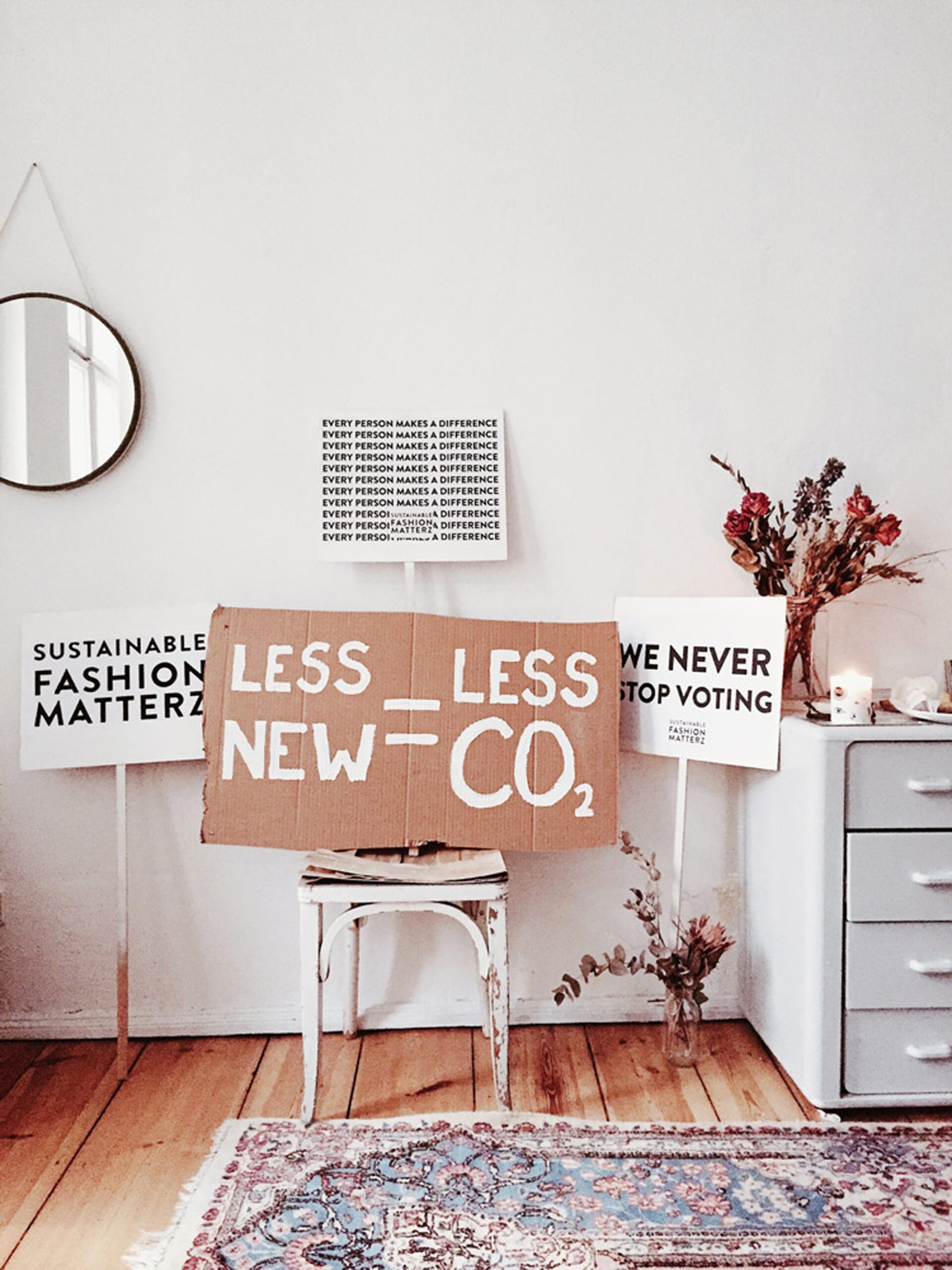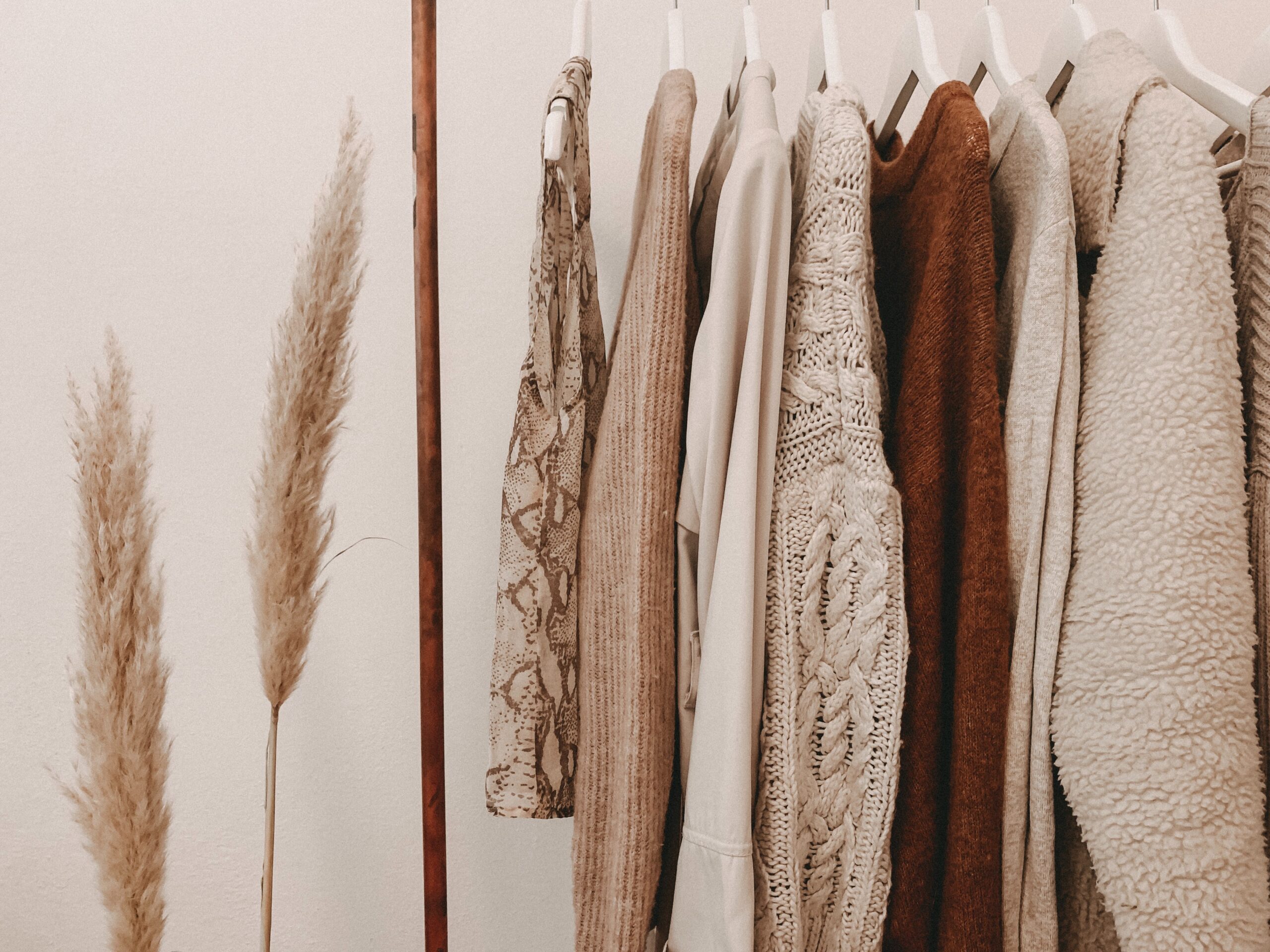Are you wondering how you can make your wardrobe more sustainable and ethical when all you hear is that fast fashion is destroying the planet? We may all be aware of the environmental impact of the fast fashion industry, but a sustainable wardrobe can feel a little daunting. Where do you start when there is so much that needs to be done?
What is a sustainable wardrobe?
A sustainable wardrobe is one that helps to reduce the impact that your clothes have on the planet.
By buying timeless, high quality pieces, properly caring for the clothes that you own and wearing your entire wardrobe rather than just a small percentage of it, you will have already made massive progress towards achieving a sustainable wardrobe. It’s as easy as that.
A sustainable wardrobe is loved, worn and most importantly, used again and again. It works to fit every occasion and is something that you can be proud of. And don’t worry, dressing sustainably can be affordable and offer you all the choice of clothes that you want, so you don’t need to compromise.
Here are some simple steps that you can take today to make your wardrobe sustainable and ethical.

Used clothes
If you source them from the right place, used clothing can be a great problem solver and makes them more sustainable – because they have already been used by someone. Charity shops are great for this because they are very strict about what they sell, how they clean it before sale and so on. Clothing manufacture does take a lot from the environment so going with second-hand clothes helps balance this out.
Washing clothes
There are a few tips for making your clothing care more sustainable:
Don’t wash your clothes every time you wear them
Modern materials are very clever and mean you don’t need to wash them every time you wear them unless there’s a stain or something specific that needs cleaning.
Line dry as much as possible
Dryers use a huge amount of electricity and don’t always create the nicest smelling clothes. So where possible line dry your clothes and let the fresh air do the work for you. One tip is to use a little less detergent to make sure they are well rinsed before hanging to dry.
Avoid dry cleaning
The worst way of cleaning clothes is dry cleaning, using loads of harsh chemicals and resources. Most clothes now don’t need dry cleaning so avoid it as much as possible. And when choosing clothes, aim for ones that don’t need it.
If you do have dry cleaning only clothes, see if you can use a spot treatment on any stains when they happen to reduce the number of times that you dry clean the item. A gentle hand wash with some liquid soap can often do a good job and leave them to air dry.
Use water-saving washers
When you are looking for a new washer, hunt down the ones that save the most resources – either power or water (or both). Front-loading washers are less water heavy and are gentler on the clothing – the fewer the washes, the longer the clothes last.
Clothing materials
The other area you can consider is the actual material in the clothing. Some materials are more sustainable than others. Here’s a few ideas:
Look at hemp
Hemp is one of the top sustainable materials because it doesn’t need a pesticide to grow or chemicals to process it into clothing. It is a highly renewable material and tops most lists of environmentally friendly fabrics.
Ethically produced clothing
Vegan, artisan, locally produced or organic are all examples of ethically produced clothing that are very sustainable and avoid pollution and animal testing. Often these clothes are well made and can last a long time, too.
Read up on cotton
Cotton is everywhere but not all cotton is equal. Look at the information on the cotton and watch for ethically produced cotton that avoids chemicals and pesticides in its production.
Wear your wardrobe
An important tip to help build a sustainable and ethical wardrobe is to use, love and wear all of it.
This may sound simple, but we all have clothes at the bottom of our cupboards that never see the light of day. In fact research shows that only 20% of our wardrobe is worn regularly.
You can be sustainable with jewellery too. Reducing waste by not buying into fast fashion trends that need replacing every so often. Instead, I would buy something like a personalised necklace which is unique to you, and likely to last longer.
Look for inspiration on how to style forgotten clothes into new outfits. If you really think you’ll never wear it again, just pass it along to someone who will… you could even potentially earn a bit of spare cash on sites like depop or Vinted.
Read more: 9 Ways To Save Time Each Day
Conclusion
These ideas show you can be fashion conscious and still be sustainable, choosing clothing that has the right materials, washing them in sustainable ways and even using second-hand clothes. All the while, you can still have your look!

